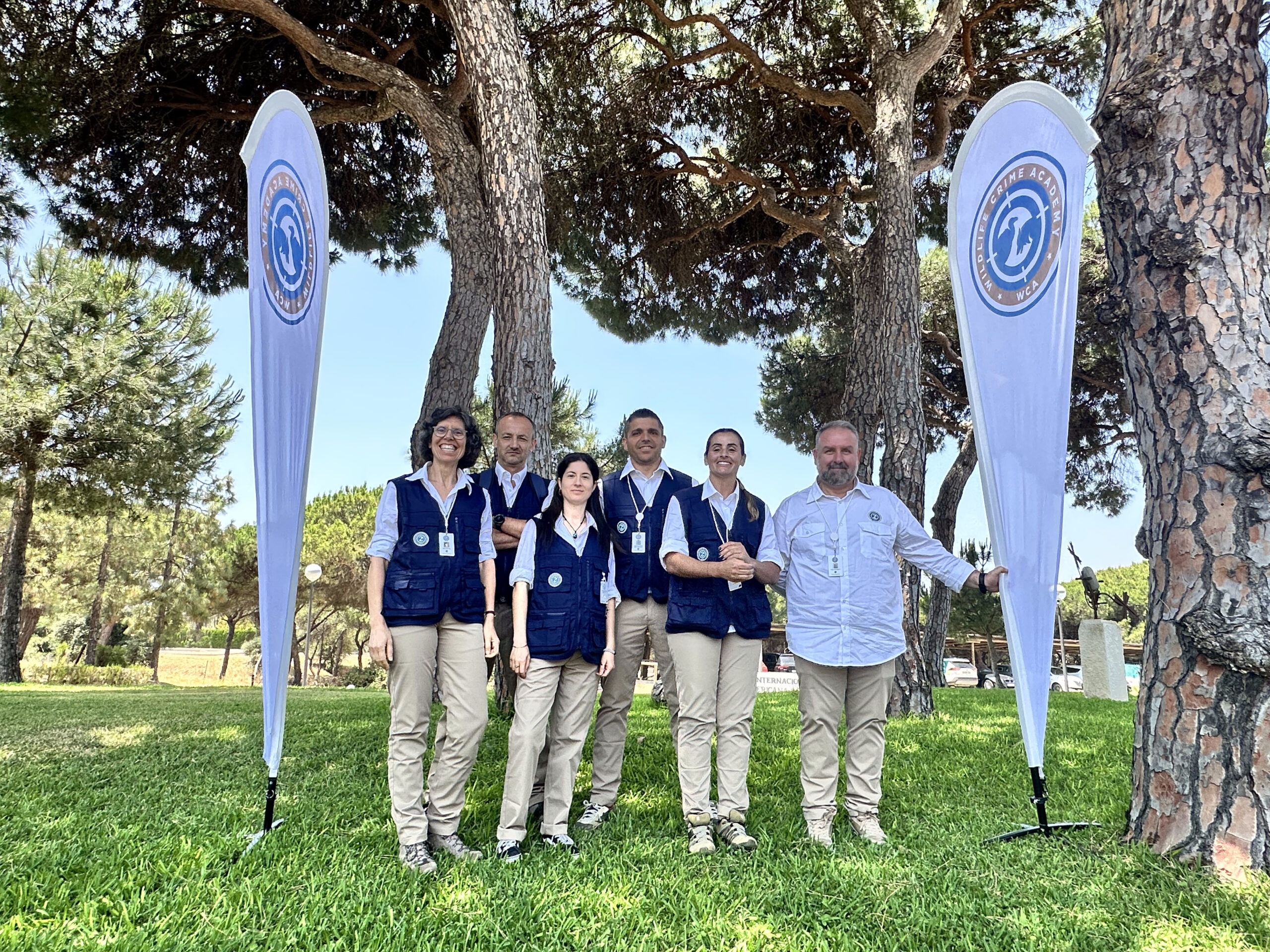The only two Cinereous Vulture (Aegypius monachus) breeding pairs in the International Douro Valley have started their nest building activities according to the monitoring efforts of our LIFE Aegypius Return project.
Two Cinereous Vulture pairs are actively building their nests in the Douro Valley



Like most other vultures, Cinereous Vultures are monogamous. Individuals take quite a long time to reach sexual maturity (4 to 5 years), and each breeding female lays only one egg per year. Couples build huge nests they reuse each year, and therefore, monitoring starts within the area of known nest locations. Since the beginning of February, our partners at Palombar, an environmental NGO based in northeastern Portugal, have been actively monitoring the area within the scope of LIFE Aegypius Return. The field team confirmed the occupation of two previously used nests and observed individuals of both pairs transporting nesting material to prepare for the breeding season ahead. We expect the females to lay their clutches in the next coming days!
To avoid any disturbance to the pairs, the monitoring was carried out at a distance of about 1600 m using optical equipment. These are the only Cinereous Vulture pairs breeding in the “Douro International and Águeda Valley” Natura 2000 Special Protection Area (PTZPE0038), partially covered by the International Douro Nature Park (PNDI). In the monitoring actions, Palombar also spotted this year’s first Egyptian Vulture (Neophron percnopterus), which recently returned from its wintering ground in Africa, and 20 Red-billed Choughs (Pyrrhocorax pyrrhocorax).
Monitoring the breeding populations of Cinereous Vultures in Portugal

The LIFE Aegypius Return project aims to double the breeding population of Cinereous Vultures across the Portuguese-Spanish border by 2027. To evaluate and boost the reproductive success of pairs, as well as identify new possible breeding sites, our project partners have started their fieldwork. In southern Portugal, for instance, our partner LPN has rebuilt and repaired Cinereous Vulture nests at Herdade da Contenda, and only three days later, the field team observed a pair perched in one of the nests.
The monitoring work will allow a better understanding of the population trends and reproductive success and will help us assess the impact of the conservation measures planned in the project. In the coming weeks, our local partners will continue actively monitoring the projects’ intervention area, so stay tuned!
The photos presented in this post were taken from a safe distance using a telescope for monitoring and conservation purposes. It is crucial not to approach nests for photography, birdwatching or other similar activities during the breeding season since this is a very sensitive period and any disturbance to the nesting pairs may result in breeding failure.
The LIFE Aegypius Return project

The LIFE Aegypius Return project aims to consolidate and accelerate the return of the Cinereous Vulture in Portugal and western Spain by improving its habitat and foraging conditions, minimising threats and developing national capacities. The project team will implement targeted conservation actions across ten Natura 2000 sites, along almost the entire Spanish-Portuguese border, to double the Cinereous Vulture breeding population in Portugal to at least 80 pairs in 5 colonies and downgrade the national status of the species from Critically Endangered to Endangered by 2027.
LIFE Aegypius Return is co-financed by the EU’s LIFE Programme and has a budget of 3.7 million euros. Its success relies on the involvement of all relevant stakeholders and the extensive collaboration of the leading project partner, the Vulture Conservation Foundation (VCF), with all local partners: Palombar – Conservação da Natureza e do Património Rural, Herdade da Contenda, Sociedade Portuguesa para o Estudo das Aves, Liga para a Proteção da Natureza, Associação Transumância e Natureza, Fundación Naturaleza y Hombre, Guarda Nacional Republicana e Associação Nacional de Proprietários Rurais and Associação Nacional de Proprietários Rurais Gestão Cinegética e Biodiversidade.




